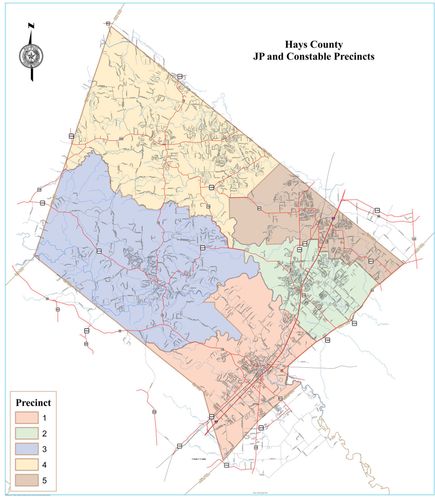Report on the Link Between Agroforest Biodiversity and Sustainable Development Goals
Introduction: A Synthesis of Ecological and Nutritional Diversity
A study led by the University of Hawaiʻi at Mānoa establishes a direct correlation between the ecological diversity of Indigenous agroforests in Fiji and the nutritional diversity of the food they supply. This research provides critical insights for achieving multiple Sustainable Development Goals (SDGs), particularly those concerning food security, health, and environmental sustainability. The findings indicate that biodiverse agroecosystems are a vital resource for developing climate-resilient and nutrition-sensitive agriculture.
Core Findings: Connecting Biodiversity to Human and Planetary Health
The research analyzed 48 Indigenous agroforests in Fiji, examining plant traits related to both ecological resilience and human nutrition. The central finding was that agroforests with high ecological functional diversity also demonstrated high nutritional functional diversity. This synergy directly addresses the following SDGs:
- SDG 2 (Zero Hunger): By providing a diverse range of nutrients, these systems contribute to nutrition-sensitive agriculture and enhance food security, moving beyond a focus on simple caloric yield to address overall nutritional quality.
- SDG 3 (Good Health and Well-being): The availability of varied nutrients from these systems offers a natural solution to help combat the rise of non-communicable diseases linked to poor, low-diversity diets.
- SDG 15 (Life on Land): The study underscores that promoting biodiversity within agricultural landscapes is fundamental to the health and productivity of terrestrial ecosystems, directly supporting the conservation of biodiversity.
Indigenous Knowledge and Climate Resilience
The report highlights that the studied agroforests are managed through Indigenous, multi-generational knowledge systems. These practices have ensured resilience against environmental disasters and disturbances for millennia. This approach offers a proven model for sustainable and climate-resilient agriculture, contributing to:
- SDG 13 (Climate Action): The inherent biodiversity of these systems enhances their ability to recover from extreme weather events and other climate-related disruptions, a critical component of climate adaptation strategies.
- SDG 12 (Responsible Consumption and Production): Agroforestry represents a sustainable production model that contrasts with modern, low-diversity agricultural practices, offering a pathway to more responsible and resilient food systems.
Policy Implications and Recommendations for Global Action
The findings advocate for a strategic shift in policy and investment towards systems that recognize the interconnectedness of environmental and human health. The study proposes the following actions to advance the SDGs:
- Increase investment in Indigenous and agroecological food production systems, both in the Pacific and globally.
- Utilize trait-based analytical tools in partnership with practitioners to design and manage food production systems that simultaneously support ecological resilience and human nutrition.
- Prioritize policies that support local food production to strengthen community resilience against climate and economic shocks. In Fiji, such systems support approximately 80% of rural livelihoods.
- Foster collaborative partnerships between researchers, local practitioners, and policymakers to integrate Indigenous knowledge into food system strategies, embodying the spirit of SDG 17 (Partnerships for the Goals).
Analysis of Sustainable Development Goals in the Article
1. Which SDGs are addressed or connected to the issues highlighted in the article?
- SDG 2: Zero Hunger: The article focuses on food production, food security, nutritional diversity, and sustainable agriculture through agroforestry. It explicitly mentions strengthening food systems and ensuring community health.
- SDG 3: Good Health and Well-being: The research directly links the nutritional diversity from agroforests to addressing the rise of non-communicable diseases and supporting human health.
- SDG 13: Climate Action: The article highlights the role of agroforests in creating climate-resilient food systems that can withstand climate disruptions and major weather disturbances.
- SDG 15: Life on Land: The core theme is the connection between biodiversity in agroecosystems (agroforests) and nutritional outcomes. It discusses ecological resilience, halting biodiversity decline, and the importance of Indigenous knowledge in managing ecosystems.
2. What specific targets under those SDGs can be identified based on the article’s content?
- Target 2.1: By 2030, end hunger and ensure access by all people, in particular the poor and people in vulnerable situations, including infants, to safe, nutritious and sufficient food all year round.
- The article supports this by showing how diverse agroforests provide a more “nutritionally diverse food supply,” which is crucial for access to nutritious food. It also mentions that food production provides “essential food security” in Fiji.
- Target 2.4: By 2030, ensure sustainable food production systems and implement resilient agricultural practices that increase productivity and production, that help maintain ecosystems, that strengthen capacity for adaptation to climate change, extreme weather, drought, flooding and other disasters and that progressively improve land and soil quality.
- The article champions Indigenous agroforests as “climate-resilient and nutrition-sensitive agriculture” and highlights their ability to recover after “major weather disturbances,” directly aligning with the goal of resilient agricultural practices.
- Target 3.4: By 2030, reduce by one-third premature mortality from non-communicable diseases through prevention and treatment and promote mental health and well-being.
- The research is presented as a way to address “rising non-communicable disease” by improving “nutritional diversity and downstream dietary quality,” which is a key prevention strategy.
- Target 13.1: Strengthen resilience and adaptive capacity to climate-related hazards and natural disasters in all countries.
- The text emphasizes that Fiji’s agroforests have “enabled resilience to varying levels and types of disasters and disturbances” and are “responsive to climate change,” directly addressing this target.
- Target 15.5: Take urgent and significant action to reduce the degradation of natural habitats, halt the loss of biodiversity and, by 2020, protect and prevent the extinction of threatened species.
- The study is framed as a solution to “declining biodiversity” by demonstrating that agroforests with greater “ecological diversity” can be maintained, thus halting biodiversity loss in agricultural landscapes.
- Target 15.9: By 2020, integrate ecosystem and biodiversity values into national and local planning, development processes, poverty reduction strategies and accounts.
- The article urges policymakers to “prioritize systems that reflect the interconnected nature of environmental and human health” and supports “stronger investment in Indigenous and agroecological food production systems,” which involves integrating these values into planning.
3. Are there any indicators mentioned or implied in the article that can be used to measure progress towards the identified targets?
- Ecological Functional Diversity: The study directly measures the “ecological functional diversity” of agroforests by analyzing plant traits. This serves as a direct indicator for biodiversity (SDG 15).
- Nutritional Functional Diversity: The research quantifies the “nutritional functional diversity” of the food supply by assessing traits like carbohydrates, vitamin A, and zinc. This acts as a specific indicator for nutritional quality and diversity (SDG 2).
- Resilience to Disturbances: The article implies an indicator by mentioning the agroforests’ ability for “recovery after major weather disturbances” and “resilience to varying levels and types of disasters.” This can be measured to track progress on climate resilience (SDG 13).
- Reliance on Local Food Production: The article notes that supporting local food production strengthens resilience against economic shocks. The percentage of food sourced locally versus imported could serve as an indicator of food system resilience and security (SDG 2).
4. Table of SDGs, Targets, and Indicators
| SDGs | Targets | Indicators Identified in the Article |
|---|---|---|
| SDG 2: Zero Hunger | 2.1: Ensure access to safe, nutritious and sufficient food. 2.4: Ensure sustainable food production systems and implement resilient agricultural practices. |
– Nutritional functional diversity of the food supply (e.g., range of nutrients like vitamin A, zinc). – Percentage of food sourced from local, biodiverse agroecosystems. |
| SDG 3: Good Health and Well-being | 3.4: Reduce premature mortality from non-communicable diseases. | – Nutritional diversity of available food as a proxy for improved dietary quality to combat NCDs. |
| SDG 13: Climate Action | 13.1: Strengthen resilience and adaptive capacity to climate-related hazards. | – Measured resilience and recovery rate of agroforests after major weather disturbances and climate disruptions. |
| SDG 15: Life on Land | 15.5: Halt the loss of biodiversity. 15.9: Integrate ecosystem and biodiversity values into planning. |
– Ecological functional diversity in agroecosystems. – Level of investment and policy support for Indigenous and agroecological food systems. |
Source: technologynetworks.com







